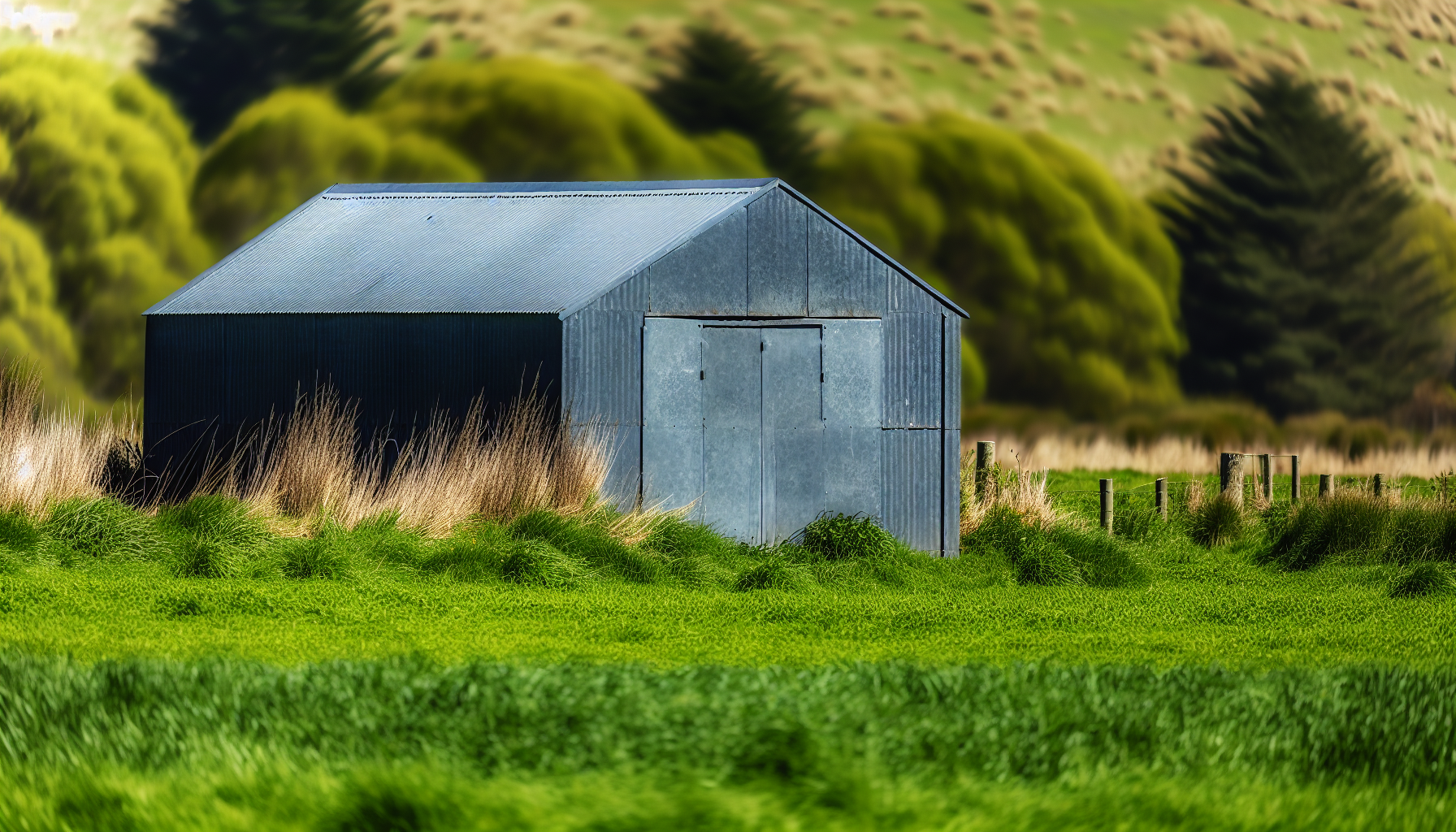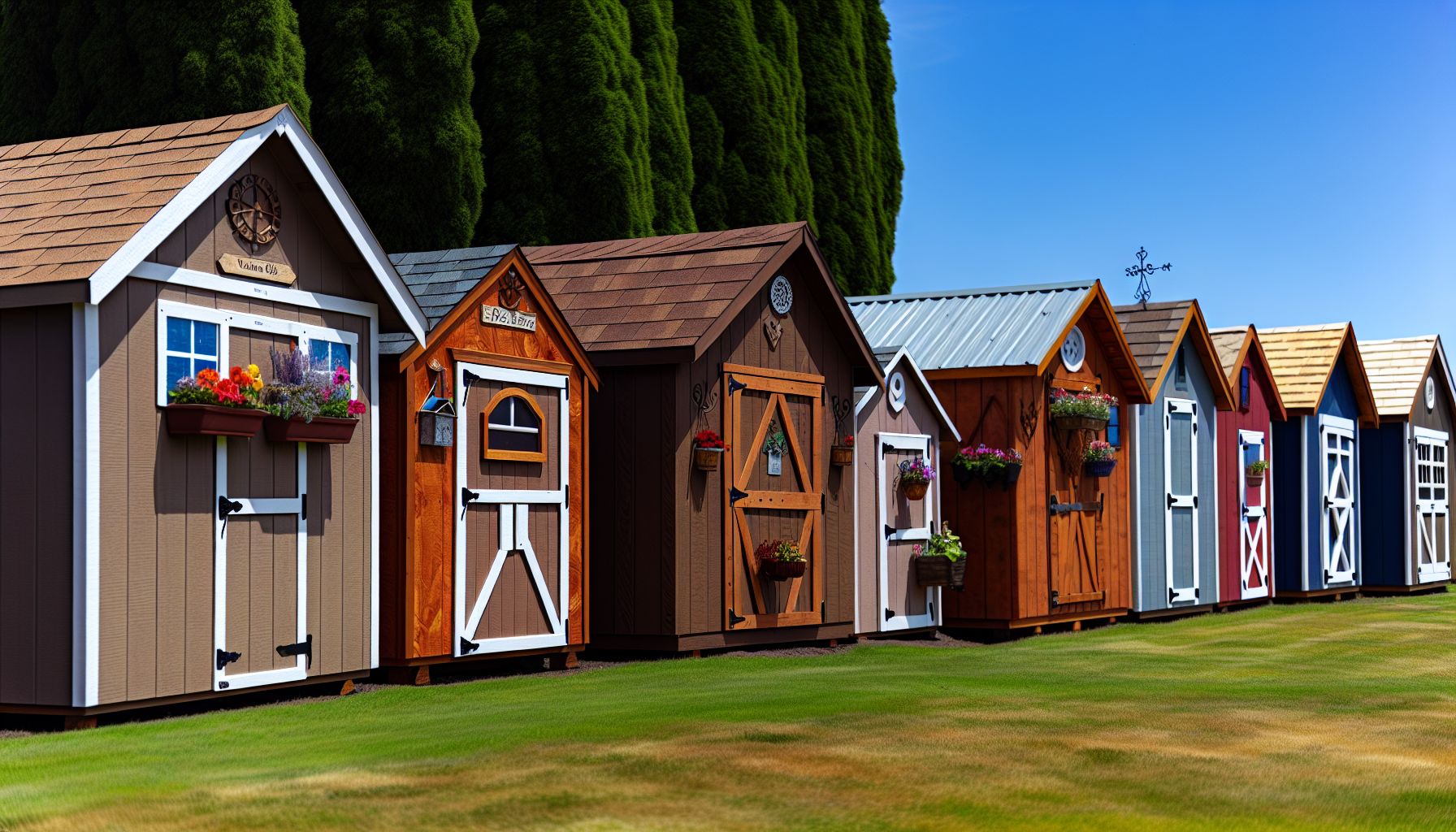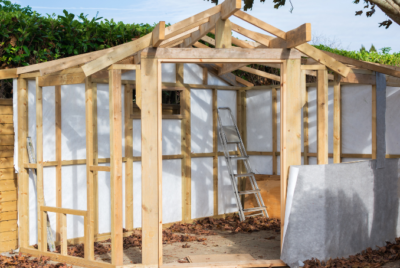Choosing Durability and Style: Wood and Metal Shed Showdown
In the matchup of wood vs metal shed, decision-makers struggle with questions of longevity, upkeep, cost, and visual appeal. If you’re in this situation, look no further. Our no-nonsense comparison of wood vs metal sheds will quickly break down the essential differences, giving you the clarity needed to choose the shed that’s right for you.
Table of contents

Analyzing Shed Materials: Metal and Wood
Metal and wood – the two titans of shed materials, each offering unique advantages. In the battle of metal vs wood, metal sheds, typically made from steel or aluminum, are known for their durability and resistance.
On the other hand, wooden sheds bring a traditional charm that many homeowners love. However, the difference between these two extends beyond aesthetics, delving into the realm of construction, maintenance, and sustainability when it comes to the metal vs wood shed debate.
In terms of construction, metal sheds usually need fewer materials, rendering them a cost-efficient option. Conversely, wooden sheds, though requiring more material, offer flexibility in design and a warm, natural appearance that blends seamlessly with most landscapes.
Metal Sheds: Steel and Aluminum
If durability and resilience are your priorities, metal sheds, particularly those fashioned from steel or aluminum, emerge as an enticing option. Aluminum sheds are lightweight and resistant to corrosion, making them ideal for regions with high exposure to salty air.
When considering a shed type for your property, steel sheds bring robustness to the table. They are fire and pest-resistant, ensuring your storage items are well protected. Their high strength and resistance to extreme weather conditions make a steel shed a preferred choice for those living in areas prone to harsh climates.
Wooden Sheds: Pine, Cedar, and More
Contrarily, wooden sheds provide an extensive array of material options. From the affordable yet sturdy pine to the naturally rot-resistant cedar, the choice of wood type significantly influences the shed’s longevity and maintenance needs.
However, the beauty of wooden sheds lies not just in their material but also in their versatility. Their ability to be painted or stained to match any color scheme makes them an attractive addition to any property. However, they do require a bit more maintenance than their metal counterparts to keep them in good shape.
Read also: Is It Cheaper to Build Your Own Shed or Buy Pre-built in 2024
Shed Durability and Lifespan

In terms of lifespan, metal and wood sheds each carry their own advantages. Properly maintained wooden sheds can last 20 to 30 years or even longer. They possess a unique charm that only enhances with age, much like a fine wine.
Metal sheds, while also boasting a lifespan of 15 to 30 years with proper care, offer greater durability. They resist:
- fire
- insects
- rot
- severe weather conditions
These extremely durable attributes make them particularly desirable to those seeking very little maintenance options.
Metal Shed Resilience
Metal sheds exhibit resilience through their capacity to endure various natural elements, making them weather-resistant. Their resistance to fire and termites makes them a reliable choice for secure storage. Moreover, the use of galvanized steel prevents rust and corrosion, further enhancing its durability.
Metal sheds have several advantages:
- They are designed to withstand extreme temperatures without warping or distorting.
- Proper anchorage during installation ensures their stability against high winds and other adverse weather effects.
- Their durability and minimal maintenance requirements make them an environmentally sustainable option, as they don’t require frequent replacements.
Wooden Shed Stability
Primarily, the stability of wooden sheds hinges on the construction quality, the type of wood utilized, and regular maintenance. Even though they can be prone to issues like rot, mold, and pest infestations, these can be mitigated with proper care.
High-quality, treated wood enhances stability and longevity. Regular maintenance, including the use of properly treated and protected materials, ensures the wooden shed remains stable over time, enabling it to age gracefully.
Maintenance Matters

No matter your choice of material, upkeep is vital to extend a shed’s lifespan. While metal sheds often require less maintenance than wooden ones, neither is completely maintenance-free. Regular upkeep not only prolongs the shed’s lifespan but also ensures it remains a safe and functional space.
Both metal and wooden sheds have unique maintenance needs, influenced by their construction and material characteristics. Diving into the specifics of shed care, the procedures vary based on whether the shed is constructed from hard-wearing steel or attractive wood.
Metal Shed Upkeep
Despite necessitating fewer maintenance efforts than wooden counterparts, metal sheds still demand regular care for longevity assurance. Regular cleaning and inspections can significantly extend their operational lifespan. Checking for signs of rust or corrosion and repairing them promptly is vital to maintain their integrity.
It’s also important to keep the shed clean, including the roof and gutters, to prevent debris accumulation that can cause rust. Annual inspection of the paintwork and touching up chipped areas can keep your metal shed looking fresh and prevent rust.
Wooden Shed Care
Maintaining wooden sheds in prime condition requires a slight increase in maintenance efforts. First and foremost, using pressure-treated lumber, especially for the parts of the shed that are in contact with the ground, can prevent rot.
Regular washing of the exterior can prevent mildew growth and maintain the shed’s appearance. Furthermore, applying a coat of paint can protect the wood from rot and mold, extending its lifespan.
To keep a wooden shed free from pests, such as carpenter ants, cleanliness around the perimeter is vital. Trimming vegetation and not storing items that can attract pests against the exterior can go a long way in preserving your wooden shed.
Customization Capabilities

Owning a shed offers the delightful opportunity to customize it based on your personal tastes and requirements. Both metal and wood sheds offer a variety of customization options, from aesthetic enhancements to functional additions that make the space truly your own.
Whether it’s adding a trellis to your metal shed or installing a fold-up work table, the possibilities for customization are as boundless as your imagination. Exploring some of the ways to tailor your shed to mirror your personal style and needs can reveal a plethora of options.
Metal Shed Personal Touches
Personalizing your metal shed can morph it from just a storage space into a stylistic expression of your taste. A new coat of paint can give your metal shed a quick and personalized makeover, aligning its appearance with your personal style.
In addition to aesthetic enhancements, adding functional features like pegboards for efficient tool storage or a fold-up work table can enhance the utility of your metal shed. The variety of customization options available for metal sheds highlights the potential for personalization, making the space truly one’s own.
Wooden Shed Possibilities
Wooden sheds present an extensive array of personalization opportunities, including the option to match your garage door. From unique designs like barn-style or gable roofs to stylistic elements such as color choices and sidings, wooden sheds can be tailored to reflect your main property’s style. To find wooden sheds that suit your needs, explore various options and designs available in the market, including the classic wood shed.
Internally, wooden sheds can be modified with built-in shelves or custom shelving units to maximize storage space. Functionally, ramps for accessibility, lean-to structures against existing walls, and barn-style designs that allow optimal airflow can be incorporated. Furthermore, eco-friendly customization options like the use of natural insulation materials and the installation of solar panels make wooden sheds a versatile choice.
Environmental Impact

In our eco-aware society, the environmental impact of shed material merits consideration. Metal sheds, particularly those made from recyclable materials, are often touted as the more eco-friendly choice. Their recyclability and reduced energy requirements during production contribute to their green credentials.
Wooden sheds, on the other hand, can also be environmentally friendly, especially if made from sustainably sourced timber. A detailed examination of the environmental consequences of both metal and wood sheds can provide valuable insights.
Metal Shed Sustainability
Particularly steel-made metal sheds, which often incorporate a significant proportion of recycled content, contribute substantially to sustainability. Metals like steel and aluminum can be recycled multiple times without degradation of quality, making metal sheds an eco-friendly choice.
Moreover, innovations in manufacturing technology are leading to reduced energy requirements during their production, further minimizing their environmental impact. These advances, coupled with their durability and low maintenance needs, make metal sheds an environmentally sustainable option.
Wooden Shed Environmental Considerations
Provided that the timber originates from renewable and responsibly managed forests, wooden sheds can also have a minimal environmental impact. One can look for the FSC logo on wood products to ensure the wood comes from responsibly managed forests.
At the end of their lifespan, wooden sheds are biodegradable, especially if constructed with untreated wood or wood treated with eco-friendly substances. However, it’s crucial to consider the environmental drawbacks of treated wood if the treatment chemicals are not eco-friendly.
Choosing a timber sub-frame or ground screws instead of a concrete base for wooden sheds can also reduce CO2 emissions and landfill waste, further contributing to their eco-friendliness.
Budgeting for Your Shed: Comparing Costs
The shed cost significantly impacts the decision-making process. Generally speaking, metal sheds are more affordable than wooden sheds due to their simpler construction and fewer required materials. However, it’s essential to consider long-term costs, such as maintenance and the potential impact on property value.
While metal sheds are typically less expensive initially, wooden sheds can offer a return on investment due to the added property value over time. Delving into the cost considerations associated with both metal and wood sheds can provide a clearer picture.
Metal Shed Affordability
Mostly, the lower cost of materials and the less labor-intensive installation contribute to the affordability of metal sheds. The cost of steel for metal sheds starts around $5 per square foot, making it an affordable base material compared to wood.
Despite their initial affordability, the value of modern metal sheds extends beyond the upfront cost. Their durability and minimal maintenance requirements make them a cost-effective option in the long run.
Wooden Shed Investment
Despite their higher initial price, wooden sheds are often viewed as an investment. They can add beauty and value to a property, justifying the higher initial cost for some owners. Despite their higher upfront cost, wooden sheds can offer a return on investment due to the added property value over time, making them a worthy consideration for
Frequently Asked Questions
Which is better wood or metal sheds?
In conclusion, metal sheds are generally better than wood sheds due to their durability, low maintenance, flexibility in design, and variety of color options.
Is it cheaper to build a shed out of wood or metal?
In conclusion, metal sheds are cheaper to build than wood sheds and have advantages such as resistance to insect damage and fire, but they may rust over time and may not be as visually appealing. Consider these factors when making your decision.
Do metal sheds get hotter than wood sheds?
In warmer climates like Texas, metal sheds can get a lot hotter than wood sheds due to the material used, while in colder climates wood sheds retain a little more warmth.
Can I customize my shed?
Yes, both metal and wood sheds offer a variety of customization options to meet your specific needs.
Which shed is more eco-friendly – metal or wood?
Both metal sheds made from recyclable materials and wooden sheds made from sustainably sourced timber can be eco-friendly choices for your shed, contributing to sustainability.
Wood and Metal Shed Final Thoughts
Selecting the right shed material is a significant decision that depends on a variety of factors, including durability, maintenance, cost, and environmental impact. Both metal and wood sheds have their unique advantages and challenges.
Ultimately, the choice between a metal and a wood shed boils down to your specific needs, preferences, and budget. Whether you’re drawn to the robust resilience of a metal shed or the charming appeal of a wooden one, the perfect shed is out there, waiting to be a part of your outdoor space.
Looking for shed inspiration? Find it here! Browse our shed plans and start crafting your masterpiece.





